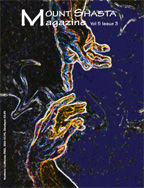Ryan S. Wood is a lecturer, teacher and authority on government intelligence around extraterrestrial incidents. His father, Robert Wood, was also involved in the field of UFOlogy, investigating the physics of UFOs in work for McDonnell Douglas.
Like the field of parapsychology or PSI, UFOlogy and matters of Extraterrestrial visitations to Earth is a topic regarding which the scientific community and governmental bodies world-wide seem notably cagey. This even though both seem required, repeatedly and increasingly, to face their persistent specters, and to disclose the facts have accumulated and protected.
Ryan Wood and Entangled Minds’ Dean Radin both express an impatience with a certain inertia of human nature quite entrenched in the scientific community a resistance to change which seems to flout the very point of scientific investigation.
Both Majic Eyes Only and Entangled Minds address a confounding topic that defies convention and the supremacy of human culture and intelligence as presently manifest. Each author spends substantial copy space describing the tendency for scientific entities to resist, filter, ridicule or suppress that which challenges the status quo, shakes the foundations of what is thought to be known safely. This even though it has been repeatedly demonstrated that what we don’t know always proves to far exceed what we do, and that it is from the uncharted darkness around the firelight of what we do know that the most rich discoveries and technological advancements of this civilization are usually mined.
Wood attributes this with regard to UFOlogy to a protectiveness of credibility. Along these lines, perhaps, he does not address the full range of extraterrestrial sightings and abduction reports. The book jacket summarizes: MAJIC EYES ONLY is a landmark synthesis and review of every credible UFO crash retrieval event uncovered worldwide to date.
Using documents leaked, declassified and liberated via the Freedom of Information Act, as well as eye-witness testimony and other carefully assessed evidence, he has detailed over 70 incidents in short chronologically progressing chapters, beginning with the first in 1897 (you read that right) in Texas, over forty years before Roswell.
Each entry is ranked for credibility using criteria he explains early on. I confess this didn’t always jibe with my own sense of certain stories, which read clumsy and implausible. However, considering the topic and his long-term immersion in it, which can lend bias, his focus seems clear, and the accounts and analysis seem to downplay hysteria, romanticism and sensationalism. These are hardly necessary! The content is eerie, and the amount of it compelling enough as it is.
Review by by Michou Landon, Mount Shasta Magazine
